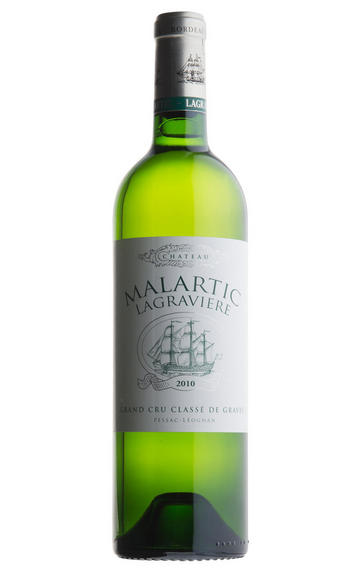
2010 Château Malartic-Lagravière Blanc, Pessac-Léognan, Bordeaux
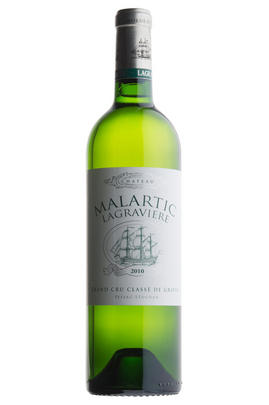
Critics reviews
Robert M. Parker, Jr. - 28/02/2013
(Jancis Robinson MW- jancis robinson.com 11 Apr 2011)
(James Molesworth – The Wine Spectator – Apr 2011)
About this WINE
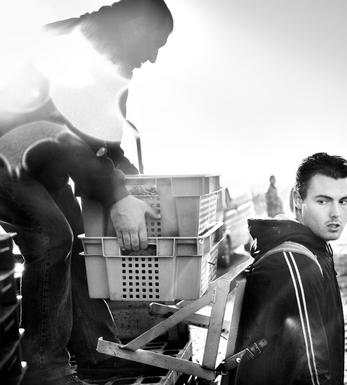
Chateau Malartic Lagraviere
Château Malartic-Lagravière, a Cru Classé de Graves,was previously owned by the Champagne house, Laurent- Perrier - in 1997 it was bought by a Belgian couple, Michele and Alfred-Alexandre Bonnie, whose son and daughter-in-law, Jean-Jacques and Severine, have now assumed control.
There are 47 hectares of under vine, but only 7 of which are dedicated to white grapes, situated on a fine gravel ridge and now almost encroached on by the suburban outgrowth of Léognan. The estate produces high quality reds as well as tiny amounts of Sauvignon Blanc-dominated white wine. The red is a blend of 50% Cabernet Sauvignon, 25% Merlot and 25% Cabernet Franc.
The grapes are fermented partly in wooden vats, partly in stainless steel tanks, and then spend up to 15 months in oak barrels, roughly 50% of which are new. The creation of a second wine, La Réserve de Malartic Rouge (previously known as Le Sillage de Malartic), has been a further aid to the qualitative improvement which has been steadily taking place here over the past decade or so. In recent years no more than 60% of the crop goes into the Grand Vin, far less than back in the early 1990s and testament to the dedication to the highest levels of quality displayed by the new owners.
Their red wines are discreetly elegant, well-balanced that can be austere in youth but, with age, develop complexity and a distinct mineral character that is shared by all the great clarets of Pessac-Léognan.
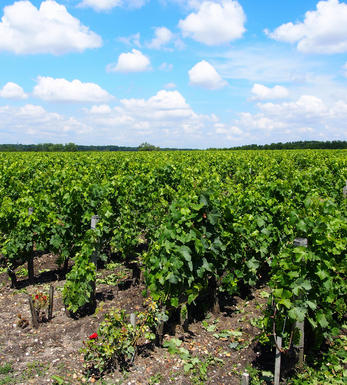
Pessac-Leognan
In 1986 a new communal district was created within Graves, in Bordeaux, based on the districts of Pessac and Léognan, the first of which lies within the suburbs of the city. Essentially this came about through pressure from Pessac-Léognan vignerons, who wished to disassociate themselves from growers with predominately sandy soils further south in Graves.
Pessac-Léognan has the best soils of the region, very similar to those of the Médoc, although the depth of gravel is more variable, and contains all the classed growths of the region. Some of its great names, including Ch. Haut-Brion, even sit serenely and resolutely in Bordeaux's southern urban sprawl.
The climate is milder than to the north of the city and the harvest can occur up to two weeks earlier. This gives the best wines a heady, rich and almost savoury character, laced with notes of tobacco, spice and leather. Further south, the soil is sandier with more clay, and the wines are lighter, fruity and suitable for earlier drinking.
Recommended Châteaux: Ch. Haut-Brion, Ch. la Mission Haut-Brion, Ch. Pape Clément, Ch Haut-Bailly, Domaine de Chevalier, Ch. Larrivet-Haut-Brion, Ch. Carmes Haut-Brion, Ch. La Garde, Villa Bel-Air.
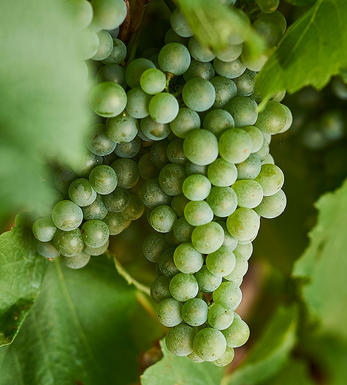
Sauvignon Blanc & Sémillon
The blend used for White Graves and Sauternes and rarely encountered outside France. In the great dry whites of Graves, Sauvignon Blanc tends to predominate in the blend, although properties such as Smith Haut Lafite use 100% Sauvignon Blanc while others such as Laville Haut Brion have as much as 60% Sémillon in their final blends. Sauvignon Blanc wines can lose their freshness and fruit after a couple of years in bottle - if blended with Sémillon, then the latter bolsters the wine when the initial fruit from the Sauvignon fades. Ultimately Sauvignon Blanc gives the wine its aroma and raciness while Sémillon gives it backbone and longevity.
In Sauternes, Sémillon is dominant, with Sauvignon Blanc playing a supporting role - it is generally harvested about 10 days before Sémillon and the botrytis concentrates its sweetness and dampens Sauvignon Blanc`s naturally pungent aroma. It contributes acidity, zip and freshness to Sauternes and is an important component of the blend.


Buying options
Add to wishlist
Description
This full-bodied blend of 85% Sauvignon Blanc and 15% Semillon hit 14.5% natural alcohol. It is deep and rich, with loads of caramelized grapefruit, tropical fruit, subtle oak, wet stones and plenty of melons. Drink now-2035.
Robert M. Parker, Jr. - 28/02/2013
wine at a glance
Delivery and quality guarantee